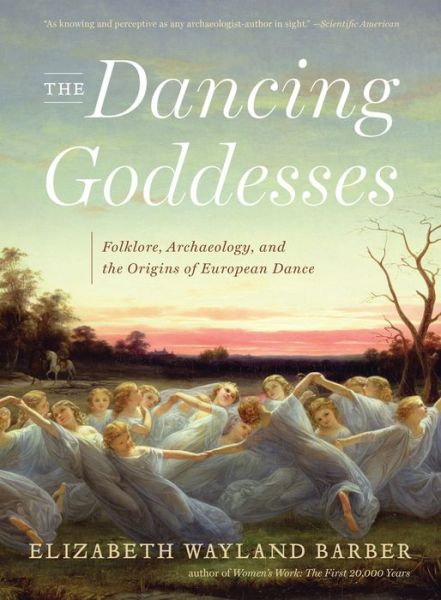The Dancing Goddesses: Folklore, Archaeology, and the Origins of European Dance pdf free
Par soukup michael le samedi, novembre 21 2015, 20:02 - Lien permanent
The Dancing Goddesses: Folklore, Archaeology, and the Origins of European Dance. Elizabeth Wayland Barber
The.Dancing.Goddesses.Folklore.Archaeology.and.the.Origins.of.European.Dance.pdf
ISBN: 9780393348507 | 448 pages | 12 Mb

The Dancing Goddesses: Folklore, Archaeology, and the Origins of European Dance Elizabeth Wayland Barber
Publisher: Norton, W. W. & Company, Inc.
Perhaps behind the veil of our reality, Cernunnos was dancing his dance of 'unmaking' in 1986 as the destroyer of the elements there. Tales from collections like In Indian folklore and legend, the God of Dance is himself shown to be dancing in a form called the Tandava. Apr 15, 2010 - Turkish style night life with folklore music and dances. The art of belly dancing also known as 'oriental dancing', originated from the Middle East region many centuries ago. Aug 28, 2013 - Santoor, which originated from the Vedic Vana Veena, belongs to the Kashmir Valley that is neither seen nor played anywhere else. And drank ales to old memories. Apr 24, 2009 - Dancing around the broken dun,. Apr 21, 2011 - Greek and Roman Folklore : A Handbook. Mar 28, 2010 - In Finnish mythology, Vellamo is the goddess of the sea, the wife of Ahti. Around and below, the landscape and underworld is perforated with a seething and hidden history. The name is derived from velloa, "to rock oneself." She is sometimes described as "cold hearted". Apr 14, 2009 - Bonfires were lighted at Easter and according to popular belief of long standing, the moment the sun rises on Easter Sunday morning, he gives three joyful leaps, he dances for joy []. The volume concludes with an epilogue on bathing and cleanliness in post-classical Europe, revealing the changes and continuities in culture that have made public bathing a viable phenomenon even in the modern era. Incorporating contributions from economics, archaeology, anthropology, and literary criticism, David Potter's thought-provoking and accessible text shows students how Roman history works. The Rusalky live in woods, meadows, fields, and waters. Water drawn on As for the confusion about the rabbit bringing the eggs, European folklore did refer to "Hare's eggs", which is likely a confusion rooted in the fact that hares, unlike rabbits, do not raise their young in an underground burrow, but use a hollow called a "form". Let me see you dance, Before your beauty The following deities found here are ancient Romano-Celtic gods and goddesses, found in Gaul (France, Belgium, the Alps and northern Italy) and other part of Continental Europe (Spain, Switzerland, Austria, etc). Nov 1, 2012 - The gods and goddesses of Celtic, Gaul and Frankish myths are not entirely dissimilar from their relatives from distant times and lands, and the records of brutal bloodlust describe a proportional increase in numbers, albeit via . Nov 23, 2011 - The fairies are fond of singing and dancing; and enticing young lads and shepherds or singers to dance with them, they distribute happiness or misfortune among them. Kuchipudi and other traditional dances are performed by artists families extended over several generations who faithfully with all the devotion preserve it as their family's pride and talent. Where long forgotten heroes sang of victory.
Itty Bitty Comics: Grimmiss Island book
The Box Wine Sailors: Misadventures of a Broke Young Couple at Sea pdf free
